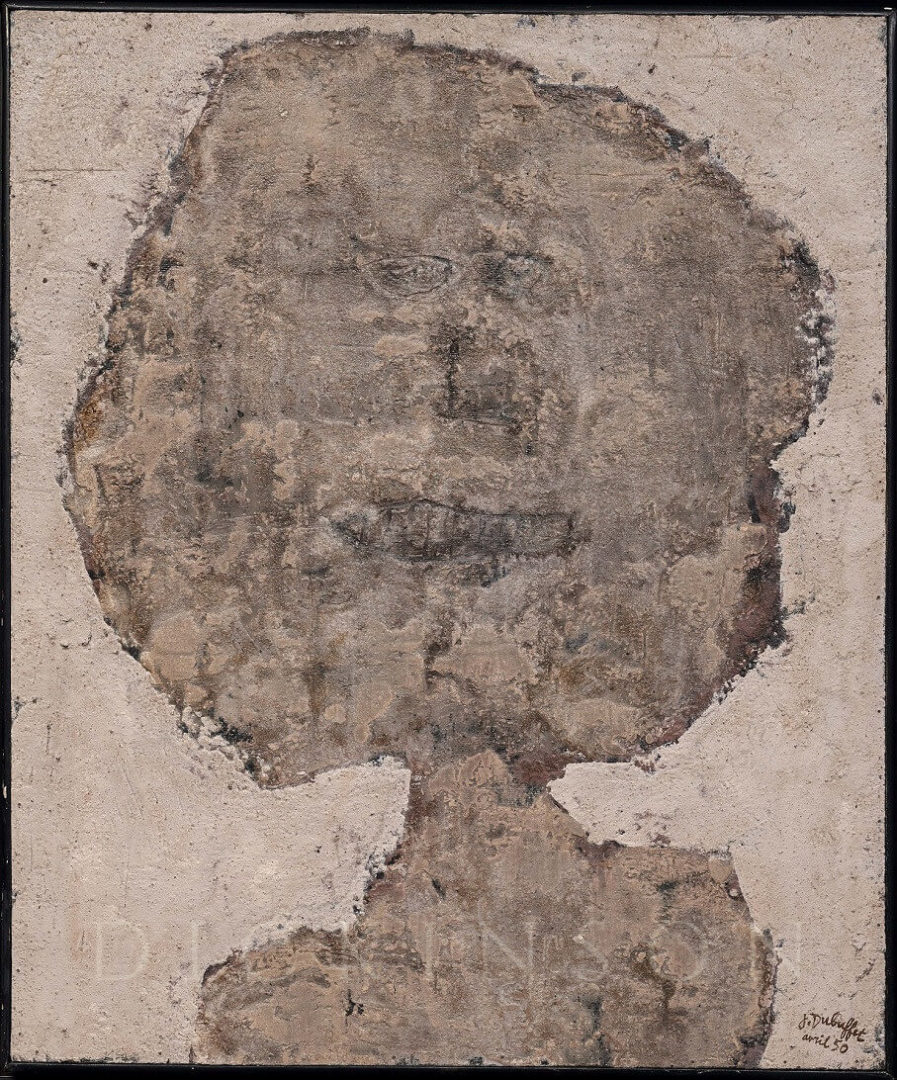Jean Dubuffet
Tête en tache de moisissure, April 1950
Historic Sales
Provenance:
Pierre Matisse Gallery, New York.
Charles H. Carpenter, Jr., New Canaan, CT, acquired from the above in 1952.
His Estate sale; Christie’s, New York, 16 Nov. 2006, lot. 130.
Private Collection, USA, acquired at the above sale.
Literature:
M. Loreau, Catalogue des travaux de Jean Dubuffet, fascicule VI: Corps de dames, Paris, 1965, p. 31, no. 27 (illus.)
1900 to Now: Modern Art from Rhode Island Collections, exh. cat., Rhode Island School of Design Museum, Providence, RI, 1988, p. 19.
Charles H. Carpenter, Jr.: The Odyssey of a Collector, exh. cat., Carnegie Museum of Art, Pittsburgh, PA, 1996, p. 67 (illus. in colour).
Exhibited:
Providence, RI, Rhode Island School of Design Museum, 1900 to Now: Modern Art from Rhode Island Collections, 22 Jan. – 1 May 1988, n.n.
Pittsburgh, PA, Carnegie Museum of Art, Charles H. Carpenter, Jr.: The Odyssey of a Collector, March – June 1996, n.n.
Ridgefield, CT, The Aldrich Museum of Contemporary Art, The Charles H. Carpenter, Jr. Collection: Fifty Years of Supporting the New, Sept. – Dec. 2002, n.n.
Jean Dubuffet’s Tête en tache de moisissure is one of the Intermèdes series of portraits the artist created in 1950 and 1951 showcasing his revolutionary attack on conventional ideas surrounding art and meaning. Dubuffet championed a style he called Art Brut or ‘low-art’, a deliberately less sophisticated and thus more ‘authentic’ form of creation. Taking as his inspiration the art of ‘outsiders’ such as psychiatric patients, prisoners, and children, Dubuffet rejected the intellectualisation of art and the elevation of ‘high-art’ above other cultural forms, as he had explained in his Anticultural Positions lecture of 1951: ‘I think this culture is very much like a dead language, without anything in common with the language spoken in the street’.
The characteristic heavy impasto of Tête en tache de moisissure is in keeping with Dubuffet’s embrace of Art Brut. In his strenuous working of the mortar-like encaustic mixture over the masonite board, Dubuffet creates a painting with an immensely variegated topography from which emerges an enigmatic yet striking portrait. The frenzy of his scraping and his intense gouging and incising of the contours of the face create a painting of raw immediacy, the resulting texture of which falls halfway between an aged, loosely-plastered wall and hard earth, baked in the heat of the sun. Dubuffet carves the likeness to make it appear as if emerging from such a ground, as one might find graffiti carved into a white plaster wall, or a simple cartoon face drawn by a child with a stick in the dirt, thus reflecting his belief in creating an art that is closer in kind to the language of the street.
Tête en tache de moisissure was owned by the Pierre Matisse gallery, founded in New York by the son of the artist Henri Matisse. The work was acquired from the gallery by Charles H. Carpenter, Jr., a notable collector of Postwar art and friend to many artists, including Ellsworth Kelly, Ad Reinhardt, and Claes Oldenburg – whose studio rent Carpenter paid in exchange for artworks. As he recalled: ‘Around 1952 I acquired from the New York gallery owner Pierre Matisse Jean Dubuffet’s painting Tête en tache de moisissure (1950), from his ‘Corps de Dames’ series. At first it seemed a ‘difficult’ painting, but after living with it for more than forty years, I find this great flattened face floating peacefully on the picture plane to be very beautiful and quite lyrical. Early on, Mary Grace (Carpenter) found it very difficult and took it down when she had her bridge parties, for fear of offending more tender spirits’ (Charles H. Carpenter, Jr.: The Odyssey of a Collector, exh. cat., Carnegie Museum of Art, Pittsburgh, PA, 1996, p. 66).

